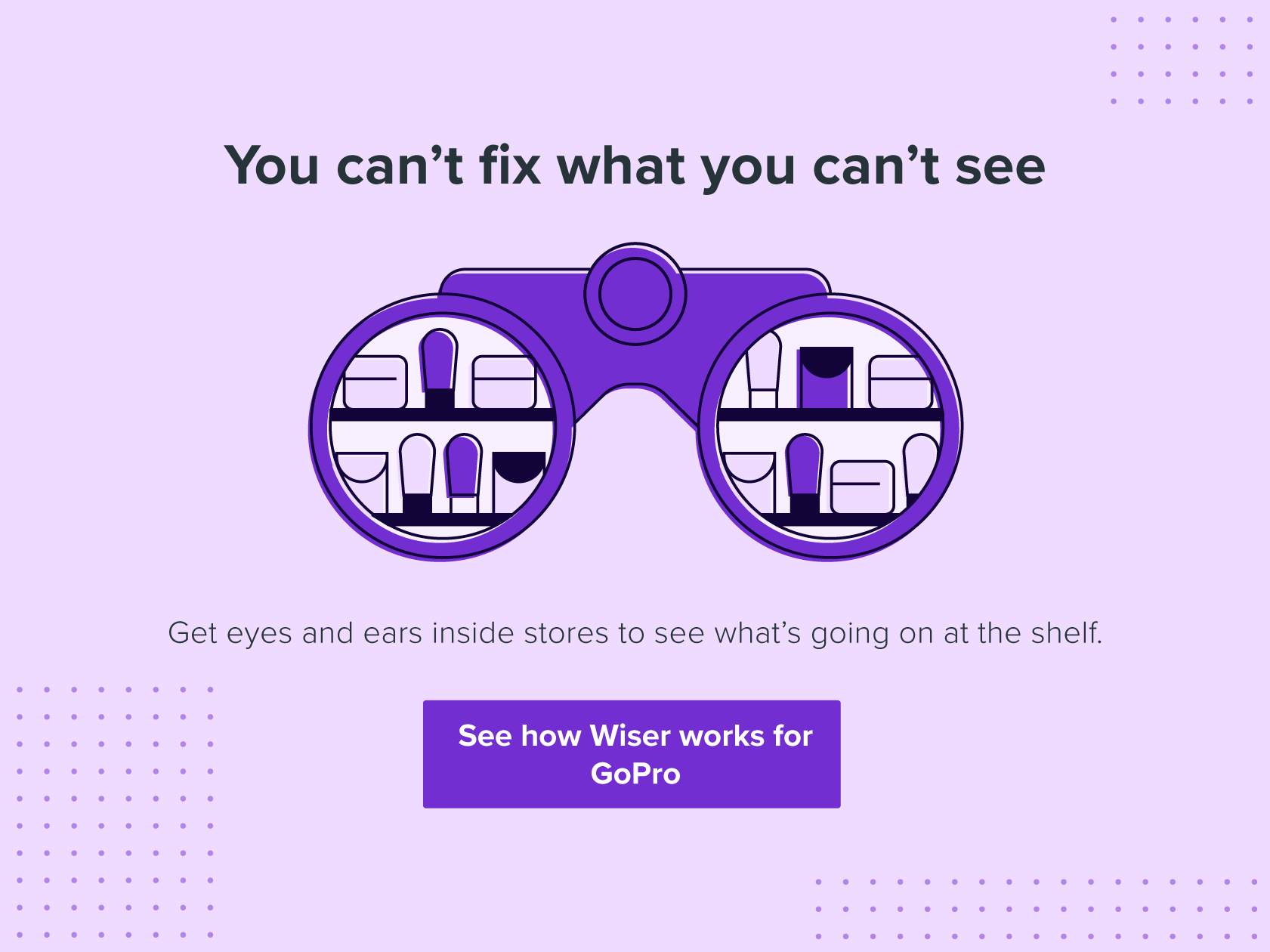In the world of retail, actionable data collection and analysis are essential to making logical, evidence-based decisions that could improve your products’ health on the shelf.
Since you rely heavily on consumer shopping behavior and shelf insights, collecting as much information as possible on what goes on inside stores is crucial. But just collecting the data isn’t enough. It’s how you use the information that can be the true game-changer.
Popular Use Cases for In-Store Data
When using retail intelligence software, you gain a wealth of knowledge and data that can help you improve your store performance and boost sales. There are many popular data use cases that could be beneficial to you.
Planogram Compliance
One obvious use of in-store data is ensuring that your products are being set up correctly based on your planogram(s).
Your brand spends a tremendous amount of time, effort, and money developing its in-store display strategies so that its products can stand out on the shelf. If those strategies aren’t being employed at the retailer, then there is a big problem, and your company could be losing out on profits.
Using in-store data collection tools, brands review display images, data on placement and number of displays, and more information directly from the mouths of the store employees, field teams, or shoppers. This way, you can find out exactly where in the process any issues may be surfacing and rectify them as soon as possible.
Product Condition
Even with an excellent planogram and a well-executed display, sales can suffer if products are in poor condition.
Retail execution software can identify items that have been damaged either in transit to stores or accidentally by retail employees while stocking. Either way, you will want to keep track of how often this is happening by tracking images of your products on shelves.
If this issue is occurring often enough to form a pattern, then this can hurt your sales and contribute to a reputation of selling faulty goods. With profit on the line, you will want to ensure that your products are in optimal condition.
Competitor Insights
Using the same shelf photos, you can also investigate adjacent products and how their packaging and displays compare to yours.
With shelf intelligence software, you can gain insights on competitor strategies and compare data. Which products are being bought more often, and why?
Eye-level is of course the most common best practice when it comes to product placement, but some brands may do better on upper or lower shelves. Learning how your competitors are doing and paying attention to how their displays differ from yours can give you the intel you need to make decisions.
Product Recommendations
Another excellent use case for in-store data is consumer buying preferences—which products are they buying most often? Are these your products or your competitors?
Online, companies can utilize recommendation boxes to show others what products relate to their purchases, like Amazon’s “Buy it with” suggestions before completing your purchase. At brick-and-mortar stores, this isn’t quite as easy.
Using your data, you need to figure out which products pair well together and then make sure they are placed within physical proximity to each other. Look into the purchase history of your products or ask customers their buying preferences. With this information, you can determine if there is a pattern in other items being bought at the same time and then purposefully pair them together in-store.
This can be other products from your brand, or products that are performing well and relate to yours, but don’t directly compete against you.
You can also create coupons based around this. Offer a deal where you get a percentage off of your product if bought with certain others. Or look into partnering with another brand for a particular sale that could be lucrative to you both.

Online vs. In-Store
One battle brick-and-mortar brands and retailers are constantly waging is that of consumers migrating over to online purchasing. Using in-store data, you can work against this by comparing how successful certain products are online vs. their in-store counterparts.
If there are products that do consistently well online, create in-store deals to entice shoppers and then advertise these deals on your websites. This prompts consumers to visit brick-and-mortar locations if they want to obtain the same products for a lower price.
Vice-versa, you can also use your in-store data to enhance your online presence.
Some products may be in high demand at retailers that cannot always keep up with availability. Knowing what products are in-demand and making them readily available and advertising to the consumer online can help increase sales. This will also provide insight on which items should be promoted in the future.
Customer Experience
Lastly, you should take a look at one of the most influential factors behind your data—the consumer. Ask why customers are making their purchases. What do some products have that others do not?
Shoppers often make their buying decisions based on either price point or emotion. This is why impulse buys can have such a significant impact on sales.
Part of your data collection should include testimonials from either shoppers or employees that can attest to the customer experience at the store. Are your products easy to find? Do customers have any complaints or questions that are going unanswered? This is key information that could be setting your brand apart from others in a negative way.
Advances in in-store data collection software can provide you will an enormous amount of information that can be overwhelming to turn into actionable strategies. At the end of the day, it is about ensuring that you are showing the right products to the right customers, in the most efficient and profitable way.










